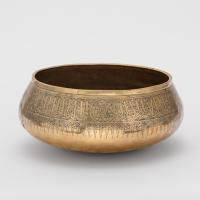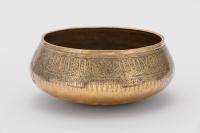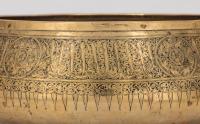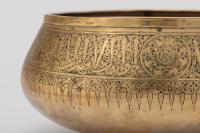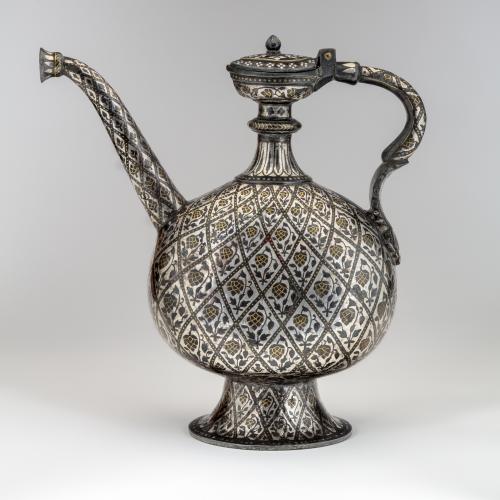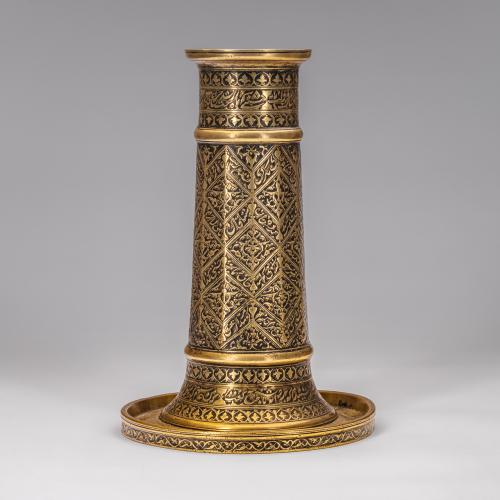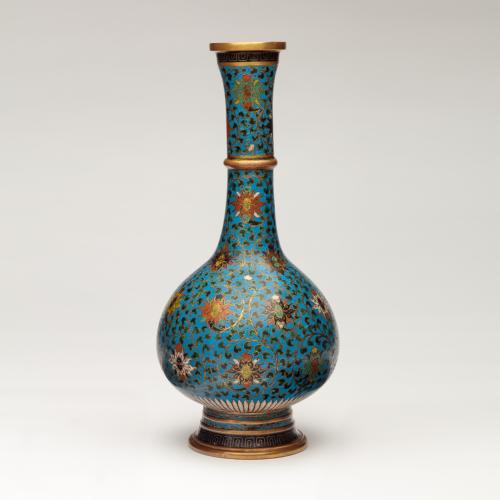
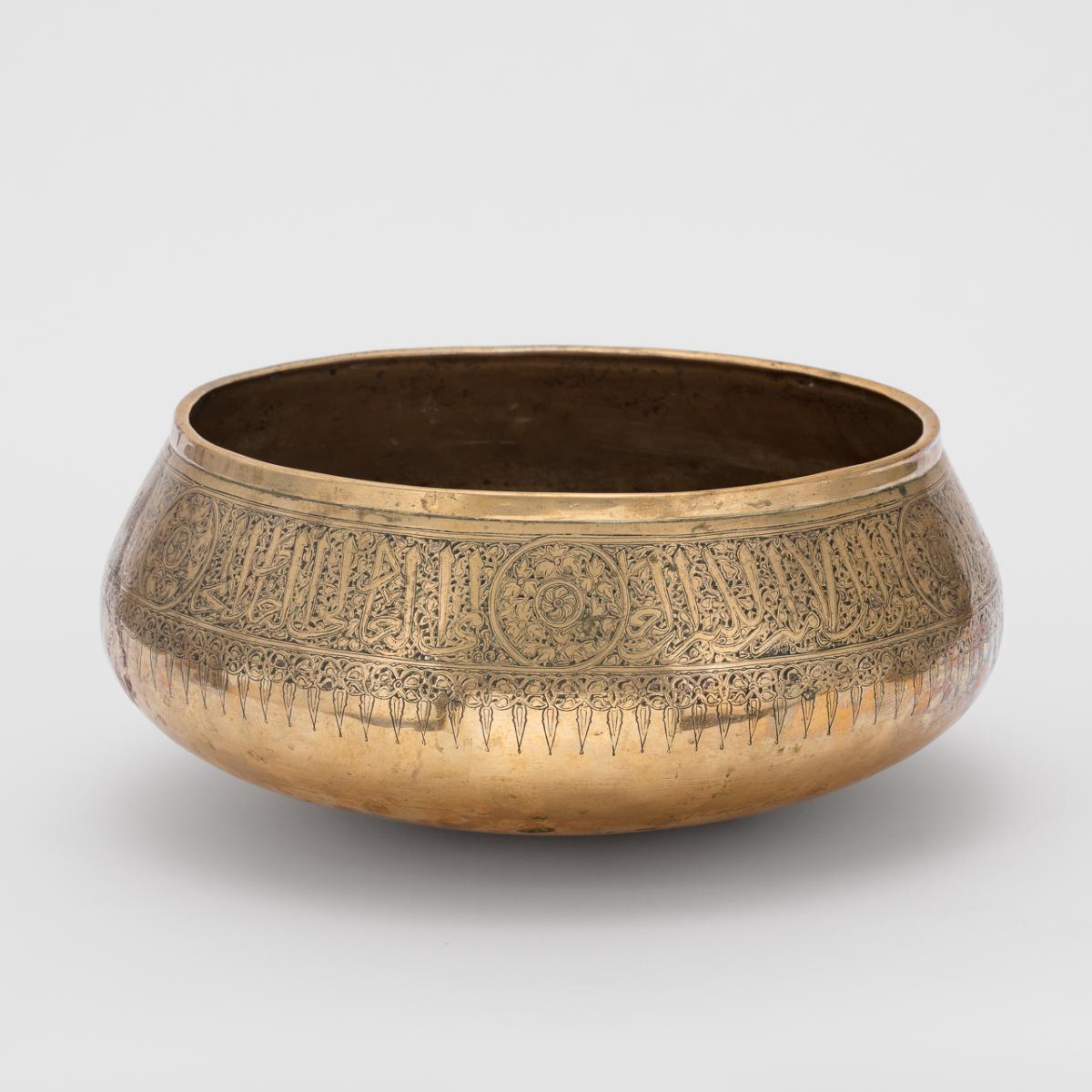
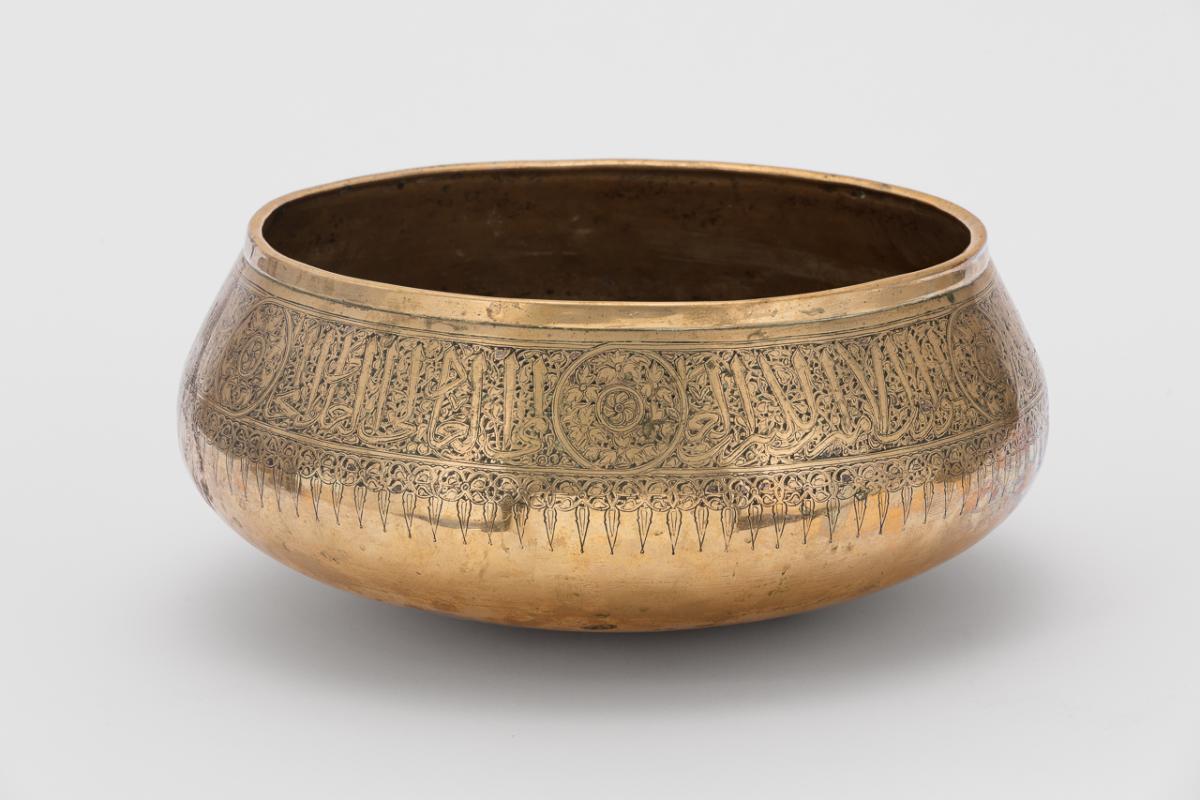
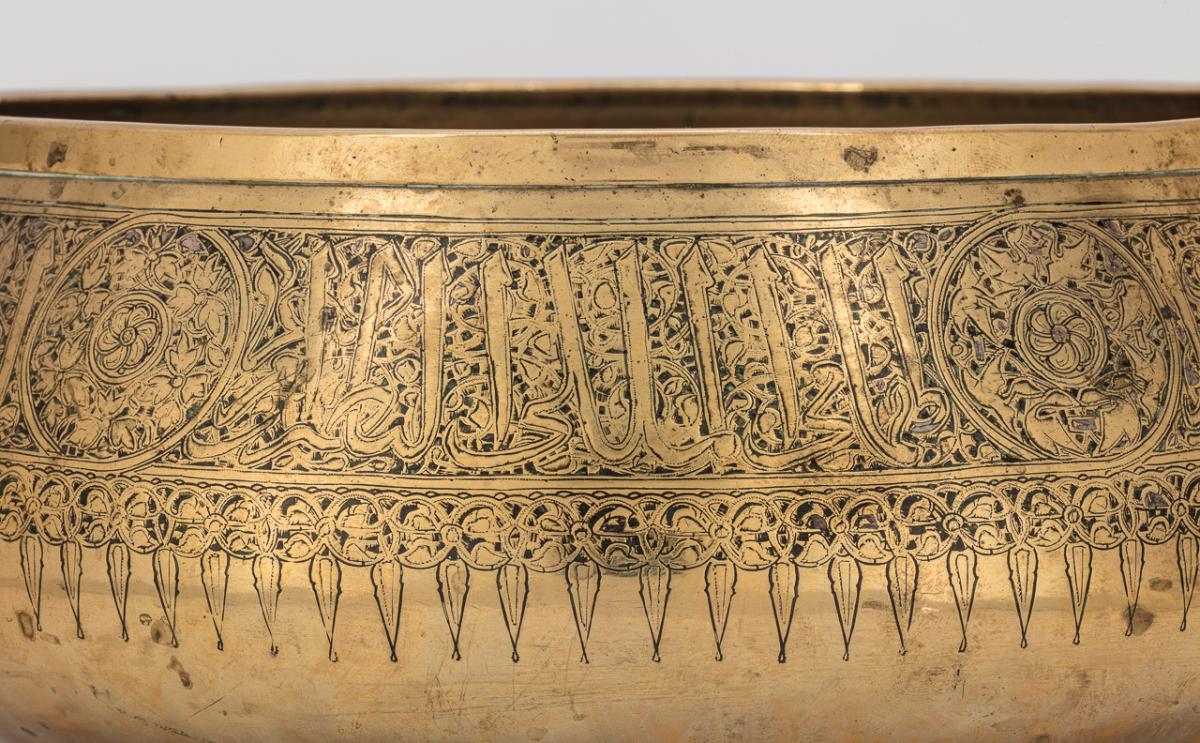
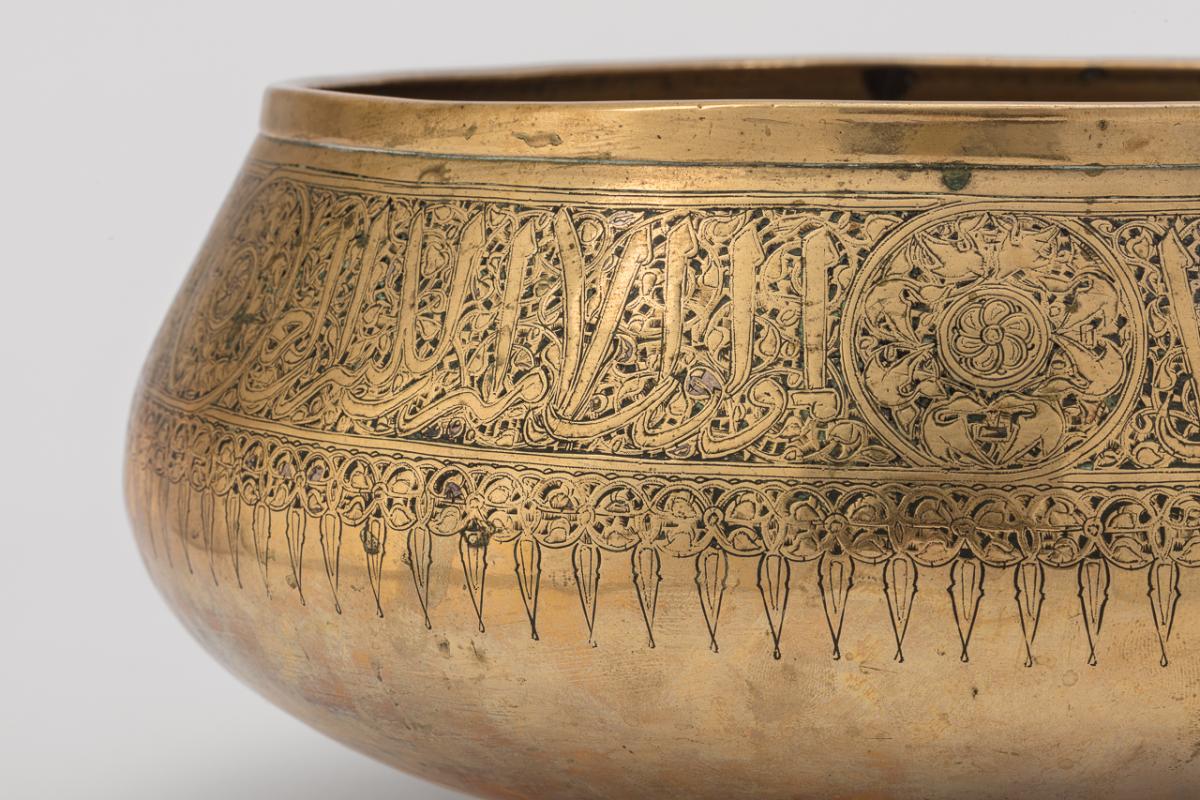
Price on application
This object is eligible for a Certificate of BADA Provenance
The BADA Standard
- Since 1918, BADA has been the leading association for the antiques and fine art trade
- Members are elected for their knowledge, integrity and quality of stock
- Our clients are protected by BADA’s code of conduct
- Our dealers’ membership is reviewed and renewed annually
- Bada.org is a non-profit site: clients deal directly with members and they pay no hidden fees
Mamluk Bowl.
Egypt or Syria, Early 14th century.
Brass with traces of silver inlay.
32cm max diameter, 13cm deep.
Provenance: UK private collection since the 19th century.
This large, round-bottomed bowl with bulging sides and a thickened straight rim dates from the turn of the 14th century, when, according to its inscription band, it was owned by an officer of al-Nasir Muhammad, the ninth Mamluk Sultan. Also known as Ibn Qalawun or by his kunya Abu al-Ma’ali, he ruled Egypt intermittently between 1293 and his death in 1341.
Written in thuluth Arabic script, the inscription reads:
“The High Authority, the Honourable, the High, the Lordly, the Great Commander, the Learned, the Just, the Conqueror, the Holy Warrior, the Defender, the Protector of frontiers, the Aided (by God), the Helper, the Protector, the Counsellor, the Administrator, the Valiant, (an officer of) al-Malik al-Nasir, may his glory be everlasting.”
Officers frequently commissioned metal objects for their personal use and chose to have the blazons of the sultan they served, rather than their own names, inscribed, in order to benefit from the cultural capital derived from the association with royalty.
The body of the bowl is made from brass, and the ornamentation band is inlaid with a black substance with traces of silver inlay. The six roundels which break up the inscription are filled alternately with flowers and flying birds. The birds would have been inlayed with silver, adding details of the wings and beaks, an example of which can be seen on a basin in the British Museum (accession no. 1878,1230.686). At the centre of each roundel is a six-petalled whirling rosette, a symbol thought to be associated with the house of Qalawun.1 A floral arabesque with lancet leaves adorns the lower edge of the inscription band.
The inside of the bowl is decorated with another whirling rosette, this time with twelve petals. It is surrounded by six fish tail to nose. The depiction of fishponds at the bottom of basins is a traditional Islamic motif seen in metalwork ranging from the twelfth century to the sixteenth century.2 Though there is no trace of silver on the inside of the bowl, the double line around the fish suggests that silver inlay was considered.
A bowl in the British Museum (accession no. 1866,1229.63) of similar form but smaller size gives a rough idea of how this piece would have looked with its inlaid silver intact. It also shares the lancet leaf decoration below the inscription band, and the inside of the bowl features a twelve petalled whirling rosette, surrounded by six fish tail to nose.
n.b. accession nos are clickable links.
1 Atıl, Esin. Renaissance of Islam: Art of the Mamluks. Washington, D.C: Smithsonian Institution, 1981. P. 67.
2 Ibid. p. 90.
The BADA Standard
- Since 1918, BADA has been the leading association for the antiques and fine art trade
- Members are elected for their knowledge, integrity and quality of stock
- Our clients are protected by BADA’s code of conduct
- Our dealers’ membership is reviewed and renewed annually
- Bada.org is a non-profit site: clients deal directly with members and they pay no hidden fees


